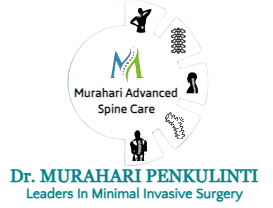Murahari Advanced Spine Center
Spinal infections
Spinal infections
Spinal infections are rarely seen. In some cases, an infection may develop in the spinal bones, cushions between the vertebrae (discs), sheath enveloping the spinal cord, or the space around the spinal cord. The cause of infection may be various bacteria or fungi.
Infections of the spine may result from a previous spinal surgery, or develop spontaneously in patients who carry some risk factors. Factors that create a tendency for infection include: poor nutritional status, immune system disorders, HIV infection, cancer, diabetes and obesity. Also, in developing countries, patients who consume unpasteurized milk or dairy products are under risk for infections caused by the brucella bacteria.
Factors specific for surgery includes long operative time (length of surgery), use of instrumentation, and revision surgery.

Even in hospitals with optimum conditions, especially when instrumentation is used, infection rates may rise up to 4 percent despite all precautions. Repeat operations in the same area may further increase the risk. Most surgical infections occur between three days and three months after surgery.
What are Symptoms of Spinal Infections?
The findings of infection may be fever, fatigue, headache, neck stiffness, and local signs including swelling, tenderness, redness, drainage, or pain in the operative field. In some cases, the patient may experience numbness in the arms and legs, loss of sensation, decrease in muscle strength. The development of these symptoms may be subtle in some patients, or severe from the beginning in others.
